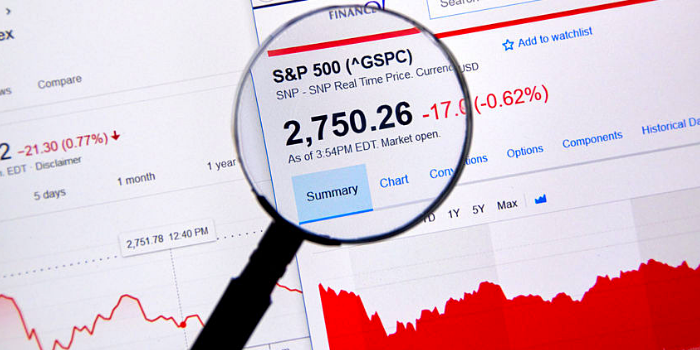
The S&P 500 Has Plunged Into Correction Territory
A cauldron of economic fears: trade wars, the Chinese economy slowing to a grind, peak domestic profits, political turmoil in Europe, continuing Fed rate hikes, ballooning federal deficit, and a host of other potentialities. Fear is everywhere. And as of Tuesday’s close, the S&P 500 plunged -10%.
Focusing too closely on the index, most investors don’t realize that the S&P is diverting attention away from the much bigger events taking place outside of it: 1,256 stocks overall have hit 52-week lows while only 21 hit new highs. In other words, combining these stocks hitting extreme levels, only 1% hit all-time highs while 99% hit 52-week lows.
Around 77% of companies in the S&P have exceeded expectations by 5.6% above the five-year average. Yet companies reporting positive earnings have experienced an average decline of -1.5%. Companies that report negative earnings have fallen by an average of -3.8%.
Just a few days before the S&P as a whole fell into correction territory, 353 stocks have already declined by 10% while 179 of S&P stocks have already plunged by 20%, bear market territory.

Take a look at S&P materials index broken down by sector. Utilities happen to be the outperformer.
And finally, the worst S&P performers:
What the future holds in store, nobody can predict, and nobody can control. But ensuring portfolio security and growth, and hedging against market risk and inflation are achievable given sound principles. Harry Browne, economist and investment guru, demonstrated these principles, the results are shown below:
As we covered in last week’s article on the myth of a balanced portfolio, history has proven that standard financial advice during times of market turmoil can result in financial moderate to severe underperformance.
Many precious metals vendors will try to goad you into buying gold and silver. As wise as this advice can be, considering the long-term impact of inflation, it may also mean missing out on stock gains and fixed-income benefits.
Stock advisors will try to talk you into “diversifying” and “rebalancing” your portfolio into 70% bonds and 30% stocks. Not only does this do nothing to shield you from a market collapse, neither assets protect your purchasing power from the erosive effects of inflation.
Some will say that “cash is king,” and to hold on to the US dollar, dumping everything else. If you stashed $1 million over the course of 20 years with inflation rising on average by 3%, then your million will be worth $400,000 at the end of the holding period. Plus, you miss out on all of the growth that stocks, bonds, and gold can provide you.
A permanent portfolio consists of 25% stocks, 25% bonds, 25% cash and 25% gold. Their results of holding such a portfolio, as illustrated above, are the same as holding stocks but with the added benefit of greater purchasing power, as inflation cannot erode the value of gold.
So the question you must ask yourself is whether you are willing to gamble in the coming months with your money in the markets, or whether you are willing to hedge your wealth and experience financial security and growth.
Wherever you are with your investments, now is not the time to be indecisive!

















